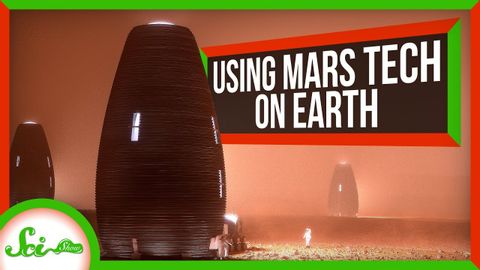火星での生活が地球での生活をより良くする方法 (How Living on Mars Would Make Life Better on Earth)
林宜悉 が 2021 年 01 月 14 日 に投稿  この条件に一致する単語はありません
この条件に一致する単語はありません- n. (c./u.)条件;期間;学期;用語;関係;項;妊娠期間;任期
- v.t.称する
US /səˈsteɪnəbl/
・
UK /səˈsteɪnəbl/
US /praɪˈɔrɪti, -ˈɑr-/
・
UK /praɪ'ɒrətɪ/
- n. (c./u.)優先順位;優先度;優先通行権
- adj.優先的な
US /ˈætməˌsfɪr/
・
UK /'ætməsfɪə(r)/
エネルギーを使用
すべての単語を解除
発音・解説・フィルター機能を解除

